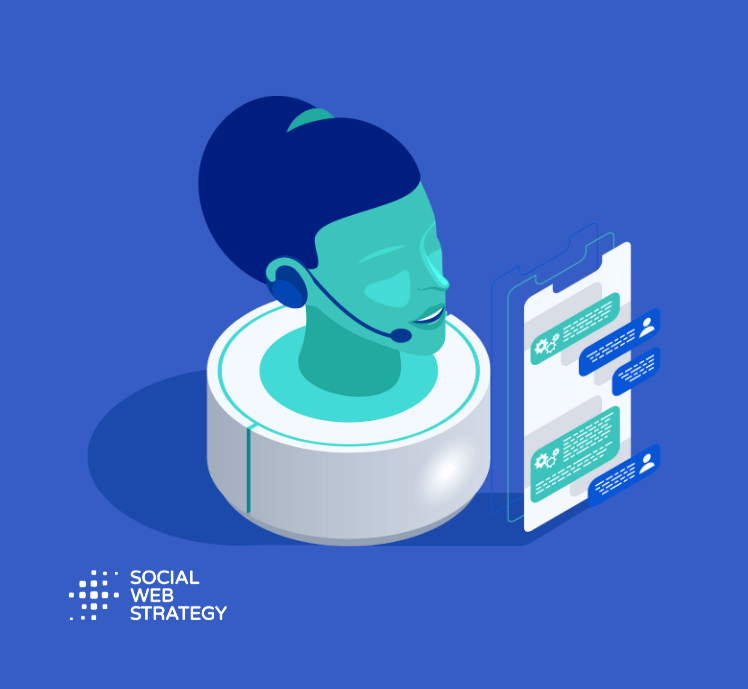A brand’s identity serves as the linchpin, influencing purchasing decisions and fostering enduring connections. Traditional values intermingle with modernity, brands that articulate a compelling identity are not just preferred, they are sought after.
The brand development process is not merely a logo or a tagline; it is a holistic representation of an entity, encapsulating its values, personality, and promise to its audience. A strong brand identity ensures that you not only earn the trust of your customers but can also differentiate yourself from the competition.
This blog delves into the intricacies of crafting a powerful brand identity, exploring the fundamental elements, the steps involved, and the role it plays in the overall success of any business, large or small, or personal endeavor.
What is a Brand Identity?
Brand identity is the visual, verbal, and emotional essence that distinguishes a brand. It encompasses elements like logos, colours, and messaging, shaping a brand’s unique personality. It’s the fingerprint that resonates with consumers, forging recognition and loyalty.
Beyond aesthetics, a unique brand identity communicates values and promotes substantial connections with consumers. It encapsulates not just what a brand offers but also how it enriches lives.
A strong brand identity differentiates you from competitors, builds trust with consumers, and creates a memorable impression. It’s the foundation for consistent communication across all platforms, from marketing materials to customer interactions.
How To Create A Strong Brand Identity?
Creating a strong brand identity is not just a design exercise, it’s a strategic approach that intertwines creativity with market insights. A brand identity is the cornerstone of recognition, trust, and customer loyalty. Each step contributes to a brand identity that not only stands out but resonates authentically with your target market. Here are some brand identity guidelines that you need to follow:
1. Target Audience
Define your audience rigorously and inquire into demographics, preferences, and pain points. This in-depth understanding ensures adapted communication that resonates with your audience. Precision in targeting transforms your brand identity into a magnet for engagement, nurturing connections that go beyond transactions. Comprehending the complexities of their aspirations and challenges, your brand can speak directly to their needs.
2. Research and Analysis
Conduct comprehensive research on marketing trends, industry dynamics, and consumer behaviors. This foundational analysis unveils strategic insights, identifying strengths, weaknesses, opportunities, and threats. Crafting a brand identity becomes a deliberate and informed process. Understanding the pulse of your industry and consumer expectations provides the bedrock for a brand to fit seamlessly into the market.
3. Build Online Presence
Forge a compelling online presence through a user-centric website and active social media engagement. Remember, your brand identity is not just showcased, it’s experienced. An online presence ensures your brand is not just present, but connecting authentically with your audience. Leverage interactive content and meaningful online interactions where your brand’s essence is not only witnessed but actively participated in.
4. Brand Story
A well-crafted story transforms your brand from a mere entity into a relatable personality. Humanising your brand helps you create an emotional tether with your audience, encouraging a connection that transcends product or service offerings. This emotional sonority not only deepens brand loyalty but also forms the basis for a shared narrative, where your audience becomes integral characters.
5. Competitor Analysis
Market benchmarks can strategically differentiate your brand, ensuring it stands out among competitors. This analysis serves as a compass, guiding the brand identity development that captivates and outshines. Beyond identifying strengths and weaknesses, consider the uncharted territories. This not only positions your brand uniquely but also unveils opportunities to redefine industry standards.
6. Consistency is Key
Consistency is the glue that binds your brand identity, reinforcing recognition and trust. Whether it’s the logo, colour palette, or communication style, a unified brand presentation cultivates credibility and loyalty. This reliability not only establishes a strong brand foundation but also resonates with consumers. It creates an expectation of quality and dependability that turns one-time customers into long-term brand advocates.
7. Promote Your Brand
Through content creation, collaborations, and strategic advertising, actively promote your unique value proposition. Consistent promotion serves as the megaphone for your brand identity, broadcasting its distinctive attributes and attracting a wider audience. Establishing a strong online presence not only magnifies your reach but also allows your brand to be a thought leader. It also contributes valuable insights to your industry and builds trust among your audience.
8. Seek Feedback & Iterate
Actively seek feedback from customers, employees, and stakeholders. The iterative process of refinement, guided by valuable insights, ensures that your brand identity remains energetic and responsive. This ongoing dialogue not only enhances your brand’s adaptability but also establishes a customer-centric approach. Every piece of feedback becomes a stepping stone for continuous improvement which is not just responsive but anticipatory of its audience’s desires.
What Are The Key Components of A Strong Brand Identity?
Ever wonder “how to create a brand identity?” but still lack the key points of what it takes to be a strong brand? These are the questions that help you more with getting creative and building strong components that make you “YOU”. A strong brand identity is built on several key components that work together to create a cohesive and memorable representation. Here are the essential elements:
1. Brand Essence:
This is the core of who you are as a brand. It defines your reason for being and establishes a foundation for all other elements. The creation of brand identity is made of:
- Values: The core beliefs and principles that define your brand’s character, guide decision-making, and shape the brand’s identity. These are the fundamental beliefs and principles that enlighten your business decisions.
- Mission: This is your company’s purpose, outlining the impact it seeks to make and the values it upholds. What problems are you solving, or what needs are you fulfilling that others are lacking?
- Vision: A forward-looking statement that articulates the brand’s aspirations and where it aims to be in the future. This is your aspiration for the future and sets you to questions: what do you aim to become?
- Unique Selling Point (USP): The distinct and compelling factor that sets your brand apart, communicating the value it provides to customers. What makes your brand special and irreplaceable?
2. Brand Personality:
Assume your brand is a person attending a party. How would you describe them? This element focuses on the traits and characteristics that define your brand’s personality. Here is what it’s made of:
- Friendly: Infusing warmth and approachability into your brand, making it relatable and inviting for customers.
- Reliable: Establishing trustworthiness and consistency ensures customers can depend on your brand.
- Sophisticated: Cultivating an image of refinement and elegance, appealing to a more discerning audience.
- Adjustable: Remaining is adaptable and responsive to different situations, showcasing versatility and resilience.
Choose adjectives that reflect your brand essence and the emotions you want to evoke in your audience.
3. Brand Voice/Messaging:
This is the tone and style you use to communicate with your audience. But remember, consistency is key. Here are the basic elements of brand messaging:
- Tone: Informative or humorous? Setting the emotional tone of your communication, whether it’s formal, casual, or somewhere in between.
- Style: Defining the manner in which your brand communicates, including language, vocabulary, and cultural nuances. How do you craft your message? Is it direct and to the point, or more storytelling-focused?
- Informative: Providing valuable information that educates and empowers your audience, positioning your brand as an authority.
- Humorous: Infusing humor into your messaging to create a memorable and positive brand association, builds a lighthearted connection.
4. Brand’s Visual Identity
This is a tangible representation of your brand that people see and experience. It’s a visual language that communicates your brand identity and designs the essence of its personality.
- Logo: A memorable and versatile symbol that instantly represents your brand. It is a unique visual mark that encapsulates the essence of your brand and provides instant recognition.
- Colour Palette: A carefully chosen set of colors that evoke specific emotions and contribute to recognition. Colors have psychological associations so choose one that connects and complements your brand’s personality.
- Typography: The selection of fonts and text styles should align with your brand’s personality and enhance readability. The fonts you choose should be visually appealing.
- Imagery: Visual elements, including photography, illustrations, videos, and graphics, that reinforce your brand’s visual language and storytelling with values.
5. Brand Integration
A substantial brand identity is seamless and consistent across all touchpoints. This means ensuring all the elements mentioned above work together harmoniously on:
- Websites: Ensuring your online presence aligns with your brand, including the design and content, creates a seamless and engaging user experience. The first impression you make is often your website.
- Social Media: Consistently share your brand across various social platforms to maintain a cohesive online presence. Your interaction with your audience on social media platforms should be consistent with your brand’s voice and personality.
- Customer Interaction: Infusing your brand into each customer’s touchpoint, from support interactions to user experiences. Every interaction with a customer, from sales calls to customer service, is an opportunity to reinforce your identity.
- Marketing Materials/ Ads: Crafting promotional materials that reflect your brand’s essence ensures a unified and impactful marketing strategy. Your marketing materials should represent your brand and communicate your message.
Why Branding Matters For Small Businesses?
Small businesses possess a unique charm, weaving together tradition, community, and entrepreneurial spirit. When creating a brand for yourself, small businesses can benefit by establishing a distinct brand identity, gaining visibility, and promoting customer trust. A strong brand lends credibility and sets the foundation for growth and customer loyalty. Here are some key points to creating brand identity for small businesses:
1. Budget-Friendly Strategies
Small businesses often operate with limited budgets. Crafting a brand identity involves cost-effective strategies, such as DIY logo creation with free and affordable design tools and focusing on impactful, low-cost marketing channels. Create engaging content like blogs or social media posts to establish yourself as an expert and collaborate with other local businesses for cross-promotional opportunities.
2. Localised Branding Tactics
Tailor your brand identity to resonate with the local community. Understand their needs and their preferences. Highlight community involvement, use local imagery, and embrace regional influences to create a relatable brand that connects authentically with the target audience. You can showcase your commitment to supporting local causes.
3. Brand Storytelling
Small businesses can leverage personal narratives and anecdotes to create a compelling brand story. Sharing the journey, and challenges adds authenticity and makes your brand memorable. It includes, What inspired you to start your business? What challenges did you overcome? What makes your products or services unique? These are some questions that help you narrate a good story.
4. Tagline Creation
A tagline is a short, memorable phrase that captures the essence of your brand. It should be clear, concise, and communicate your unique value proposition. A well-crafted tagline communicates the value proposition and mission, leaving a lasting impression on customers. It serves as a succinct representation of what your small business stands for.
Let’s Explore Some Widely Common Examples of Brand Identity
1. Gucci
Gucci’s brand identity is a captivating blend of heritage, luxury, and audacious creativity. The iconic interlocking Gs are instantly recognisable globally, representing the brand’s legacy dating back to 1921. However, Gucci isn’t afraid to push boundaries. Their campaigns and designs often embrace the unconventional, playfulness and theatrically into the world of high fashion. This creates a brand identity that is both sophisticated and daring, appealing to those who appreciate luxury with a twist.
2. Coca-Cola
Coca-Cola’s identity is a masterclass in emotional branding. The iconic red colour, the refreshing white script, and the universally recognised logo create a powerful visual cue. But it’s the brand’s association with happiness, togetherness, and celebration that truly sets it apart. Their commercials evoke feelings of nostalgia, friendship, and everyday joy, building a lasting emotional connection with consumers. It’s a simple pleasure, readily available, and a familiar companion for celebrations.
3. Nike
Nike’s identity is synonymous with athletic excellence and pushing boundaries. The iconic swoosh logo represents movement, while the “Just Do It” slogan is a powerful call to action that resonates with athletes. Nike caters to a diverse audience, from professional athletes to weekend joggers, by offering a range of products and campaigns. Nike’s marketing campaigns often feature inspiring stories of real athletes overcoming challenges.
Final Thoughts
For businesses in Ireland, creating a strong brand identity goes beyond mere strategy. A brand becomes more than a logo with a living entity, values, personality, and a promise to its audience. Identity serves as a bridge that connects businesses with the hearts of their communities.





